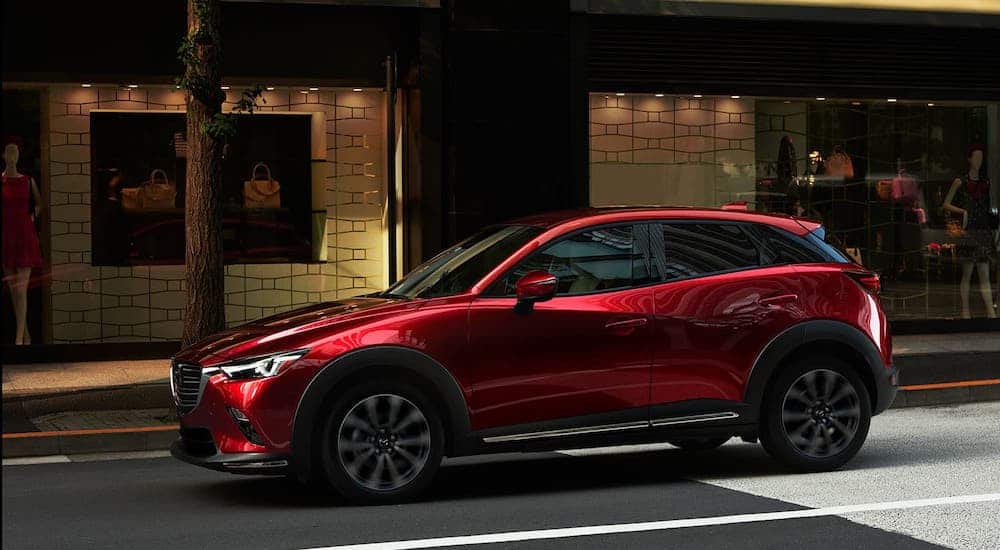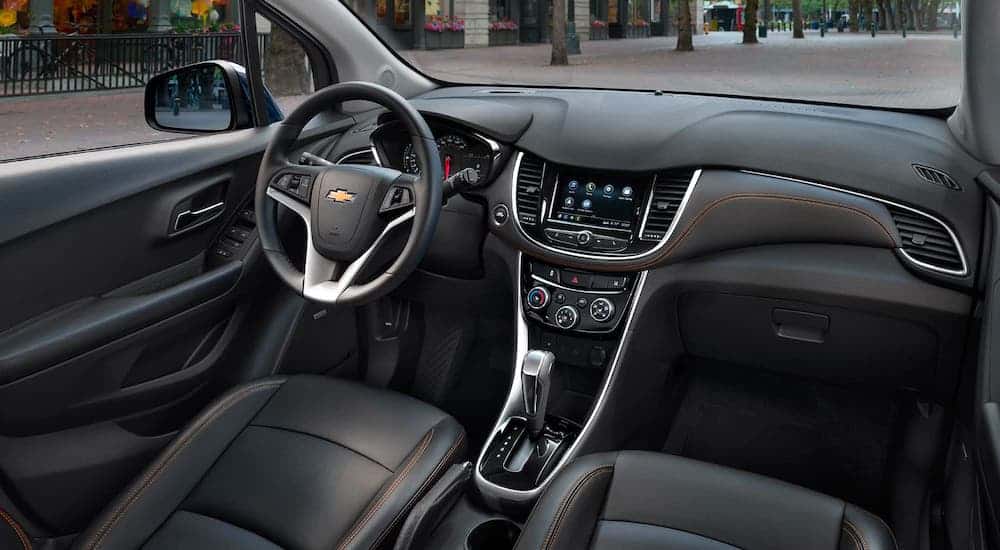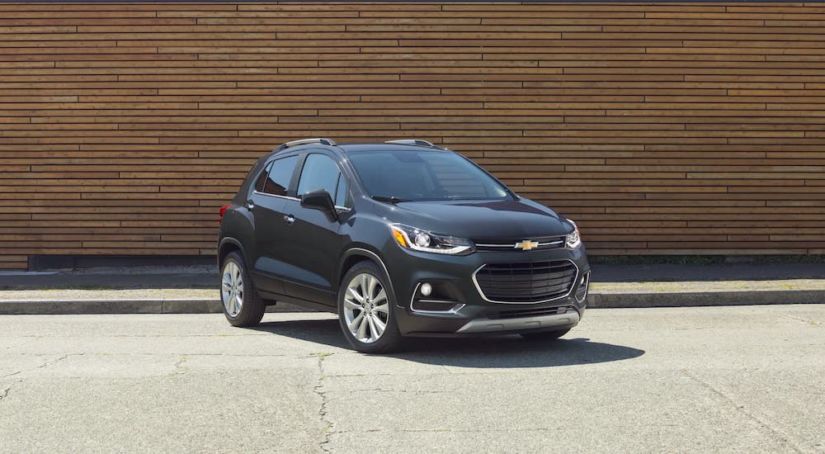There’s a battle brewing in the automotive industry, and it’s fueled by America’s obsession with the SUV. In an effort to satisfy this seemingly bottomless well of consumer demand, carmakers continue to bring new sub-category SUVs to the market. Whether it’s a high-end luxury SUV, a utility rig, or something else, the name of the game is standing out. What if you’re on the entry-level end of the category? You’re in luck! Auto manufacturers have a vehicle for you. The entry-level SUV/crossover category is highly competitive, and no more relevant example exists than the 2020 Chevy Trax vs 2020 Mazda CX-3. These two small but mighty rivals are giving economy SUV buyers a lot to talk about.
When two vehicles go head-to-head, one thing’s for sure: there is always going to be a clear winner. Whether you’re looking through the prism of price alone or something else – such as fuel economy or available safety features – is driving your decision, one of these two models may be the answer. Many buyers stop at just price, but sometimes it pays to dig deeper. While price is extremely important, especially in the entry SUV category, you’ll want to consider what else comes into play. Chances are you’ll own this vehicle for at least a few years, so taking the time to drill down to the nitty-gritty and deeply evaluate every aspect of each option is the best way to avoid buyer’s remorse.
We’ll take a look at the Chevy Trax vs the Mazda CX-3 here, highlighting price, fuel economy, available safety equipment, and infotainment features. We demand a lot from our cars these days. Let’s see if these two vehicles can live up to their potential, and more importantly, let’s determine which one ticks more boxes and offers the best value for dollars spent.

Trim Levels
Right out of the gate, the 2020 Chevy Trax has the CX-3 beat in a major way. For the 2020 model year, Mazda makes the CX-3 in a single trim line, the Sport. The Chevy Trax is available in three different trim levels: the LS, the LT, and the Premier, giving customers far more choices and packages to choose from. At each trim level, buyers can choose front-wheel drive or all-wheel drive. Mazda offers the CX-3 Sport in both front–wheel drive and all-wheel drive as well.
While Mazda attempts to simplify its CX-3 offering, it may feel more like the options are limited when customers start to build out their ideal vehicle. It’s a take-it-or-leave-it approach that may not sit well with buyers. Part of the fun of purchasing a new vehicle is selecting different options and packages. It’s the part of the process that allows buyers to fully personalize their new car and have some choice regarding how it’s equipped. In a way, Mazda has already done this for you.
Interior Space and Features
One of the standout features of the 2020 Chevy Trax is its height. Sitting at 64.9-inches high, it quite literally towers over the CX-3. You might be asking yourself, why is this important? Two words: head room. Let’s not discount the importance of space when it comes to interior comfort. After all, it’s one of the main reasons why buyers choose an SUV over a compact sedan or hatchback.
With this extra height comes more overall passenger volume, and maybe even more important, extra rear seat passenger room. Overall, passenger volume for the Trax is 92.8 cubic feet versus the CX-3 which is much lower at 87.6 cubic feet. Rear seat head room is over an inch taller in the Chevy Trax, at 38.8-inches. The Mazda CX-3 offers just 37.2-inches. If 1.5-inches doesn’t seem like a lot, you might want to ask your rear seat passengers! It makes a massive difference, as does the 52.8-inches of shoulder room in the Trax when compared with just 50.4-inches on the CX-3. Shoulder room is an important indicator of rear seat passenger comfort as it is literally the measurement of a seat’s width at shoulder height. Anyone who has had to contort their body to squeeze into a rear seat can appreciate having that extra little bit of space.
How about cargo capacity? Again the Trax pulls ahead, with 18.7 cubic feet of volume with the 2nd row of seats in place, compared with the CX-3 which offers 17.8 cubic feet of space with the same seat configuration. If you’re looking at total cargo capacity, the Trax wins again with 57-inches. The CX-3 offers less at 56.7-inches. Cargo capacity is arguably one of the most important features of a subcompact SUV because, as we’ve pointed out, space and volume are one of the main appeals of an SUV versus a smaller car. With that being the case, doesn’t it make sense to choose the vehicle that offers the most?

Other Important Details
How often do we remember to consider a vehicle’s warranty before we decide? Most consumers believe warranties are pretty equal these days, but, in truth, there are some differences that might sway you toward one vehicle over another. This is the case with the 2020 Chevy Trax vs the 2020 Mazda CX-3, but not all buyers take a little extra time to examine the warranty before pulling the trigger on a choice.
Both vehicles come with a 3 year / 36,000 mile bumper-to-bumper limited warranty and a 5 year / 60,000 mile powertrain warranty. Sounds pretty similar, but dig a little deeper and you’ll find a gem of a benefit on the Chevy Trax. Chevrolet offers the first maintenance visit absolutely free within year one, or the first 12,000 miles. That maintenance visit includes an oil change, tire rotation, and a multi-point vehicle inspection. Prices for this service vary, but average roughly $75-$100. That’s a cool savings that will keep a few extra dollars in your pocket, courtesy of Chevrolet.
Overall, both the 2020 Chevy Trax and the 2020 Mazda CX-3 are practical options that will be reliable and affordable. It all comes down to your ‘why.’ Why are you buying a compact SUV? Most people choose this category for the extra space and roominess, as well as the higher-profile street presence that an SUV provides. If that’s the case, then your hands-down choice should be the Trax. It has the CX-3 beat in interior space, cargo capacity, and height.
We also believe that the Trax beats the CX-3 in curb appeal for this reason. It looks more substantial due to its larger dimensions, and a lot of what influences a purchase is the initial feeling we get when we see the vehicle in person.
SUVs continue to appeal to buyers today not only because they are larger and provide more space, but because they appear more substantial overall. We shouldn’t discount the importance of appearance when comparing SUVs, because if we’re honest, some percentage of our reason for choosing one over another has nothing to do with practicality. It’s all about the feeling a vehicle evokes in us and whether we can picture ourselves driving it. The Trax checks all these boxes, giving buyers an option that feels both practical and fun.



